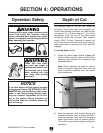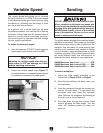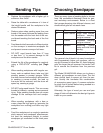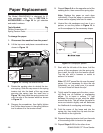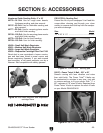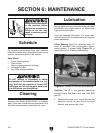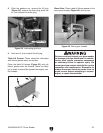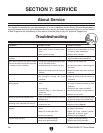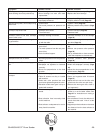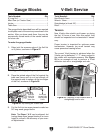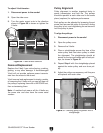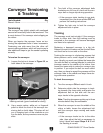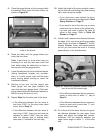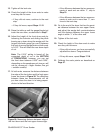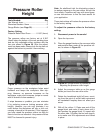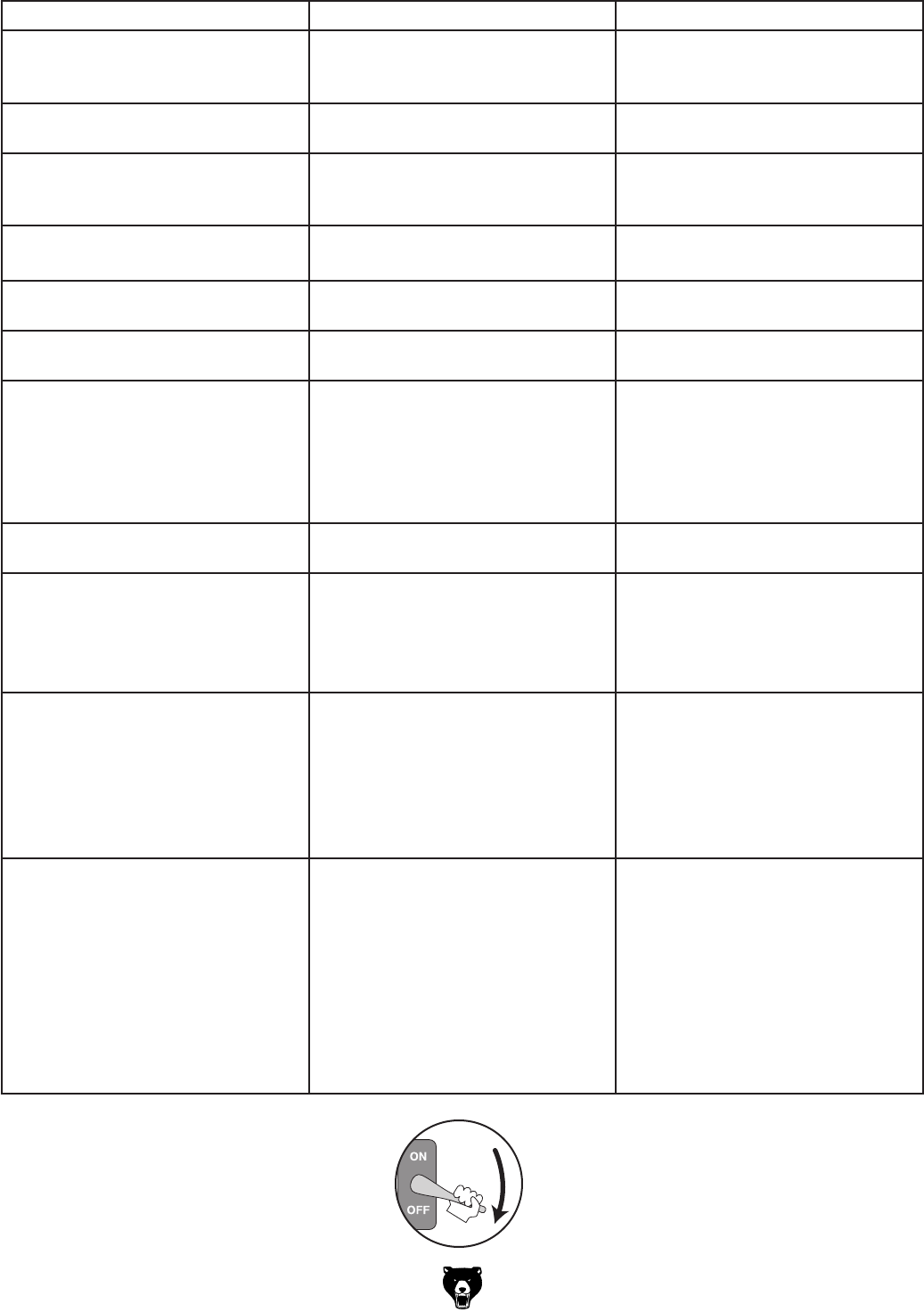
G0449/G0450 37" Drum Sander
-29-
Symptom Possible Cause Possible Solution
Grinding, screeching, or rubbing noise
when sanding drums are powered up.
1. Drum bearings lack sufficient grease.
2. Drum bearings are worn and need
replacement.
1. Grease the pillow bearings (
Page 26).
2. Replace the drum bearings.
Short V-belt lifespan. 1. Pulleys not aligned correctly.
2. Improperly tensioned.
1. Align pulleys (
Page 31).
2. Properly tension V-belts (
Page 30).
Machine lacks power; drums stop turning
under load.
1. V-belts loose.
2. Too much pressure on pressure roll
-
ers.
1. Tighten V-belts (
Page 30).
2. Reduce pressure roller pressure (
Page
36).
Conveyor slips under load. 1. Conveyor is too loose.
2. Too much load.
1. Tension conveyor (
Page 32).
2. Decrease load.
Conveyor tracks to one side; conveyor
hits the roller cover.
1. Conveyor tracking is incorrect. 1. Track the conveyor so it runs straight
(Page 32).
Workpiece pulls to one side during sand
-
ing operations.
1. One of the sanding drums is not paral-
lel with the table.
1. Adjust the sanding drums parallel to
the table (
Page 33).
Excessive snipe. 1. Too much pressure from all the pres
-
sure rollers.
2. Too much pressure from the rear pres
-
sure rollers.
3. Lack of outfeed support.
1. Reduce pressure roller pressure (
Page
36).
2. Reduce rear pressure roller pressure
(Page 36).
3. Set up outfeed table or have someone
catch the workpiece as it comes out.
Workpiece kicks out of sander. 1. Not enough pressure from the pressure
rollers.
1. Increase pressure roller pressure
(Page 36).
Sandpaper tears off drums during opera
-
tion.
1. Nail/staple in workpiece.
2. Sandpaper not tightened or fastened
correctly.
3. Drums not perpendicular to the feed
direction.
1. Sand only clean workpieces.
2. Install the sandpaper correctly (
Page
24).
3. Adjust the drums perpendicular to the
feed direction (
Page 33).
Table elevation controls are stiff and hard
to adjust.
1. Table lock is engaged.
2. Table lift screws are dirty or loaded
with sawdust.
3. Chain idler roller sprocket lock nuts
have been tightened against the roller.
4. Elevation handle worm gear is dirty or
loaded with sawdust.
1. Disengage table lock.
2. Clean and regrease table lift screws
(Page 27).
3. Adjust the lock nuts on the idler roller
sprocket so the roller can spin freely.
4. Remove the worm gear box, clean it,
and regrease it.
Poor dust collection. 1. The dust scoops are incorrectly posi
-
tioned.
2. Dust collection lines incorrectly sized
for this machine.
3. Dust collector underpowered or too far
away from this machine.
1. Experiment with the dust scoops moved
further in or out for better results. See
Page 37 for instructions on moving a
dust scoop.
2. Use at least an 8" main line with two 6"
branch lines that each Y into 4" at the
machine.
3. Upgrade your dust collector or decrease
the distance from the dust collector to
the machine.



